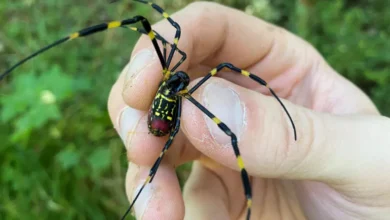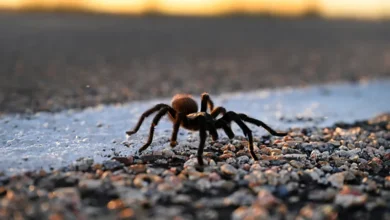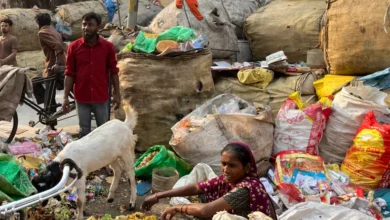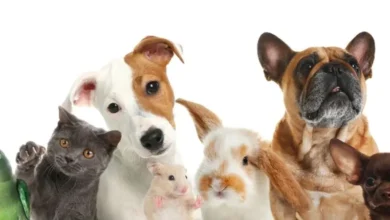Moo Deng: The shrinking habitat of the world’s most celebrated hippo
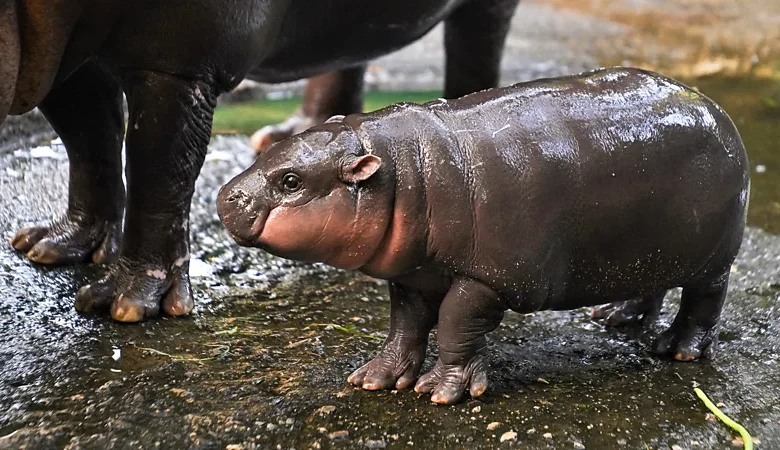
The illustrious Moo Deng has attracted a frenzy of attention. But in the wild, her species is quietly disappearing.
Every day for the last few weeks, thousands of people have made their way to Khao Kheow Open Zoo in Thailand. On one recent weekend, around 20,000 people visited to see the two-month old mammal eat and play, according to The Independent newspaper. These guests hope to catch a glimpse of a celebrity so significant, she has attracted international attention on social media and inspired a range of beauty tutorials with her rosy cheeks. This is the viral sensation that is Moo Deng – a pygmy hippopotamus known for her tiny stature and mind-boggling cuteness.
But Moo Deng is a member of a vulnerable and elusive species, Choeropsis liberiensis, which is native to West Africa. And while her fame grows, her relatives in the wild are becoming increasingly rare in their shrinking habitat.
Pygmy hippos are the world’s smallest species of hippo, and listed as endangered on the International Union for Conservation of Nature (IUCN)’s Red List. When they were last assessed globally in 2015, there were less than 2,500 mature individuals alive in the wild. They are thought to be extinct in Nigeria, one of the West African countries where they were previously endemic, but small populations remain in Liberia, Ivory Coast, Guinea and Sierra Leone.
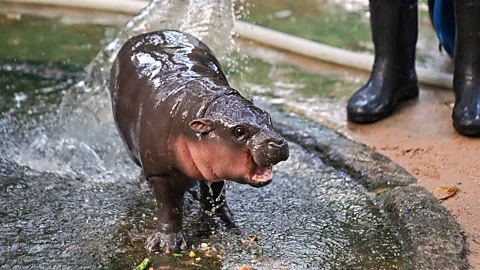 Getty Images
Getty ImagesAn elusive mammal
In their natural habitat, pygmy hippos live inland in forested areas alongside rivers, streams and swamps so they can keep their skin damp. They mainly eat grasses, leaves, shoots and fruit, feeding on vegetation at night and around dusk and dawn.
These charismatic animals have long been part of the culture and folklore of West Africa. According to a Liberian legend, the animals find their way through the forest at night by carrying diamonds in their mouths to light the way. And a story in Ivory Coast says that anyone who sees the tail of a pygmy hippo and laughs will go crazy.
But despite their place in local culture, pygmy hippos are enigmatic and have not been studied as intensively as their larger cousins. They are mainly nocturnal, secretive and relatively solitary, and it is difficult to conduct research in West African forests.
As a result of their secretive nature, experts have only been able to learn a lot about pygmy hippos from camera traps, tracking with footprints and other signs, dung samples and modelling to estimate numbers and explore their movements. Pygmy hippos kept in captivity as part of breeding programmes have also enhanced the scientific understanding of these mammals. The non-profit organisation Fauna & Flora International and Liberia’s Forest Development Authority have even used environmental DNA (eDNA) technology to look for evidence of the creatures in south-east Liberia’s river systems – a technique that involves analysing DNA found in their habitat.
A vanishing habitat
Although the pygmy hippo has been considered a protected species for decades, Bogui Elie Bandama, a researcher at the Swiss Center for Scientific Research in Ivory Coast, says research efforts increased after 2010, when pressures on its habitat rose significantly.
Large areas of original forest, especially in Ivory Coast, have been destroyed or degraded. For example, swathes have been razed to establish commercial plantations of oil palm, cocoa and rubber. Pressure for wood is another threat. Liberian forests have been extensively cleared, and the country has struggled to maintain control over illegal logging. Local people across the region also cut down trees for firewood.
But a growing threat, says Bogui, comes from illegal mineral extraction. In Taï National Park, people are panning for gold which is deposited in rivers and streams.
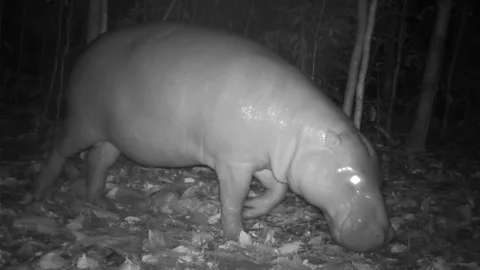 Fauna & Flora
Fauna & FloraThe extent of this deforestation and the degradation of their forest habitat makes it very difficult for pygmy hippos to survive in the wild, says Gabriella Flacke, a veterinary advisory for the pygmy hippo species survival plan and part of the IUCN’s hippo specialist group. She explains that the species already naturally had a restricted range, which made it particularly vulnerable to this kind of loss. “There’s nowhere else they can go,” says Flacke. “Their home ranges are getting smaller and smaller, and there’s just less space for them to have natural behaviors and reproduce and have the ecosystem needs available to them.”
In addition to facing the threat of their shrinking habitat, pygmy hippos are also hunted for their meat.
However, efforts to better understand and protect this endangered species continue.
Pygmy hippos are legally protected in all four West African countries in their range, although the level of enforcement varies. “Ivory Coast is probably the most well equipped for that,” says Flacke. “The country has been politically very stable, compared to Liberia and Sierra Leone, and they have more resources and better infrastructure.”
Despite years of studies, both in captivity and in the wild, there are still unknowns about how pygmy hippos live
Bogui undertakes research in Taï National Park, which is the largest primary rainforest under protection in West Africa and has a place on UNESCO’s World Heritage list. “This park offers suitable habitat for the pygmy hippo, with food and, above all, protection – even if it is not 100% guaranteed,” he says. He estimates that there are between 800 and 1,000 individuals there at present.
Bogui says the government of Ivory Coast has made some conservation efforts, such as planting more trees and enhancing the law to protect pygmy hippos.
A community effort
Meanwhile, Liberia produced a national strategy for the conservation of the species – the first country to do so – with the support of non-profit organisation Fauna & Flora International in 2013. Since that time, research has shown that Sapo National Park, the largest portion of the Upper Guinean forest ecosystem that’s still intact, is a crucial stronghold for the species.
Neus Estela, West Africa technical specialist at Fauna & Flora, says a central goal of its conservation strategy is to connect all remaining populations of the pygmy hippo. To achieve this, it has collaborated on a landscape-level assessment to identify potential conservation corridors in south-east Liberia.
Poverty and corruption remain significant barriers to addressing loss of habitat for this and other endangered species.
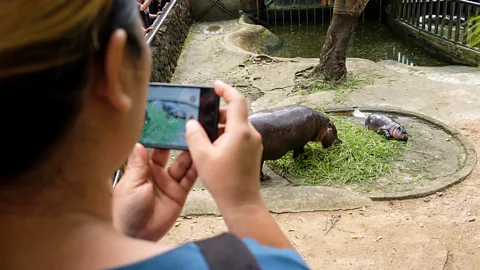 Getty Images
Getty ImagesOne solution Fauna & Flora is working on with the government and communities in Liberia is establishing a project under UN-backed forest conservation scheme REDD+ to help tackle drivers of deforestation and degradation, all while supporting the livelihoods of local people and respecting land rights.
Flacke would like to see more conservation efforts that involve the local communities in West Africa. “There is a lot of interest locally. They know that the pygmy hippo is an iconic species, maybe a keystone species for the ecosystem. But the reality of conservation is if there aren’t infrastructure and resources to support that, then people are going to struggle, no matter how enthusiastic or how dedicated they are,” she says.
To try to address this, a pilot project sponsored by Zoo Basel is encouraging unemployed young people living near the Gola Forests in Sierra Leone and Liberia to become ambassadors for this threatened species. The Pygmy Hippo Foundation is also training community forest guards in Sapo National Park to monitor and protect pygmy hippo populations.
Despite years of studies, both in captivity and in the wild, there are still unknowns about how pygmy hippos live. For example, Flacke hopes to learn more about the size of their natural home range, and whether they act the same in the wild as they do in captivity, she says.
The pygmy hippo is also likely to have an important role in its local ecosystem. Researchers speculate that, like the common hippopotamus, pygmy hippos may help disperse seeds and recycle nutrients by spreading dung and perhaps even engineer riverbanks.
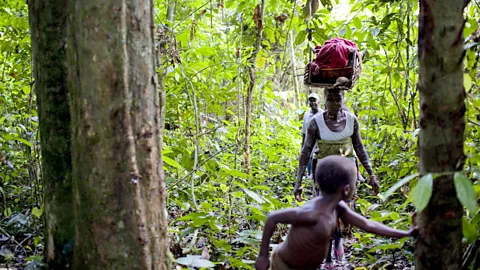 Getty Images
Getty ImagesZSL identified pygmy hippos as a priority for conservation in 2007 under its Edge of Existence Programme, but told BBC Future it no longer does any significant work on this species.
There are around 450 pygmy hippos in captivity across the world, says Flacke. But they can attract extreme attention that can be distressing or even harmful to such a shy creature. In the last few weeks Moo Deng has been harassed by some visitors, leading to security being increased around her enclosure. Bogui notes that while zoos are a way of conserving endangered species, it is much better to keep their original habitat intact.
An updated IUCN assessment for pygmy hippos is due next year, and Flacke predicts that numbers will have dropped again. “They’re still out there, we know that. But there are definitely populations where they haven’t been seen in 20 years, and there’s no footprints, no dung, no tooth marks. Where are they going? Well, they’re going away,” she says.
While Moo Deng captures hearts across the globe, thousands like her are struggling.




